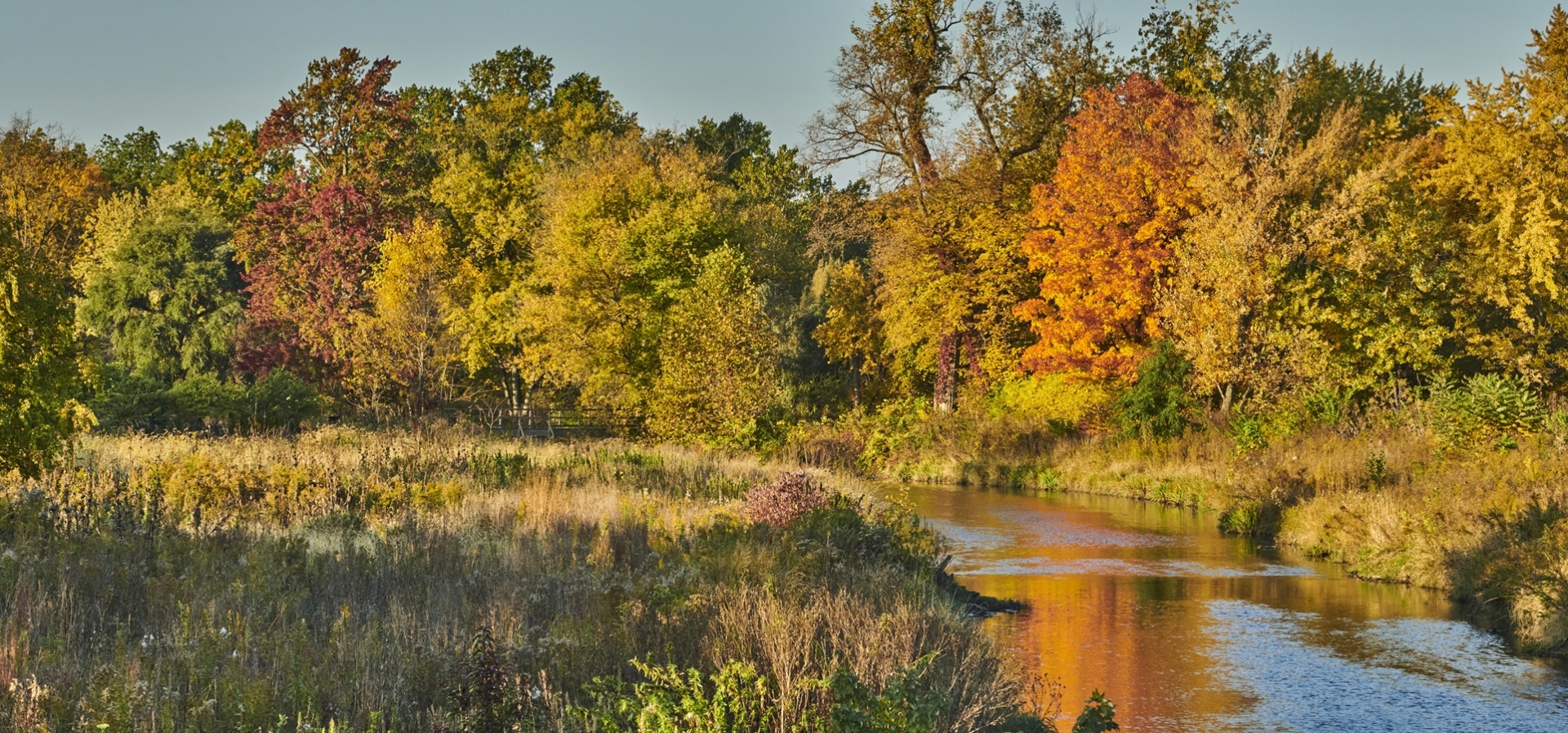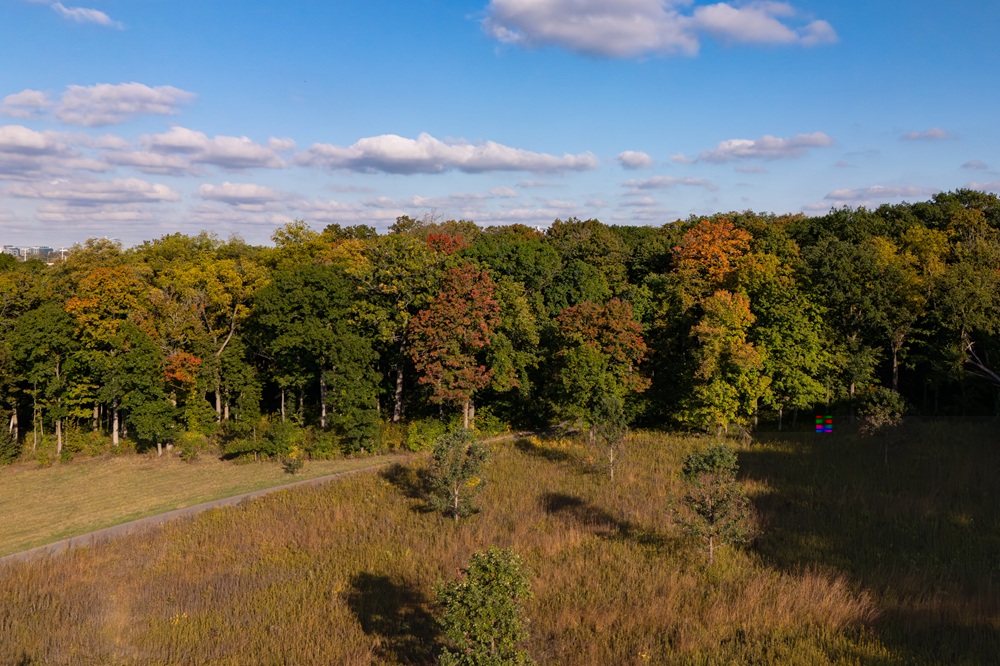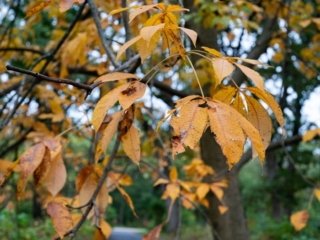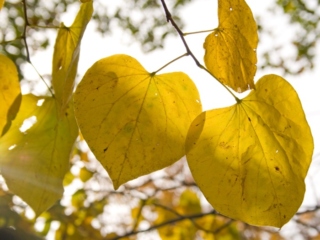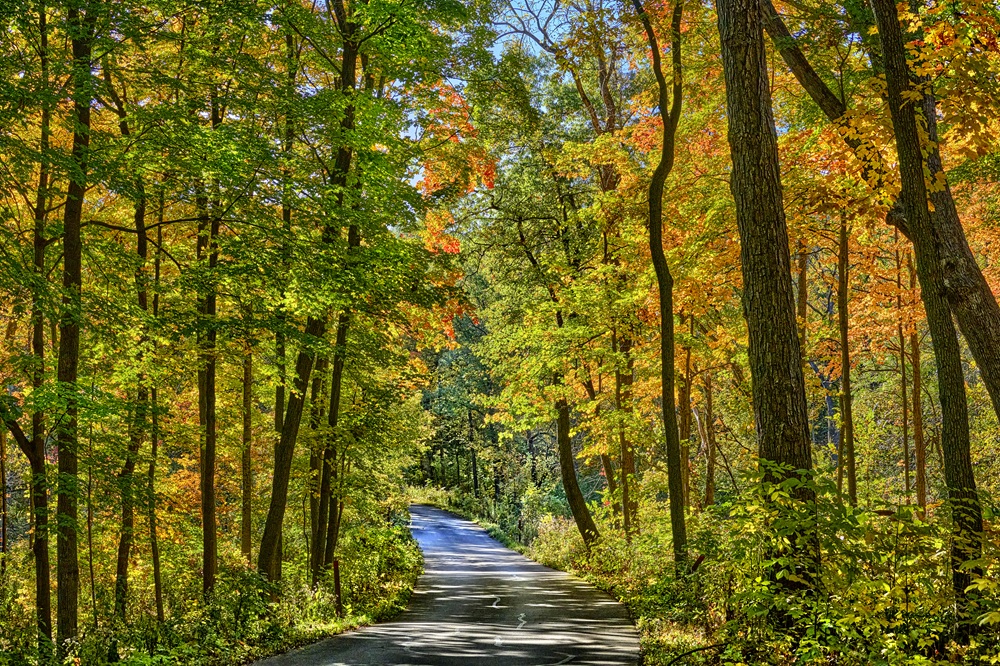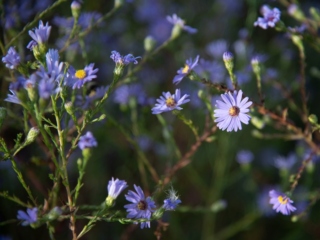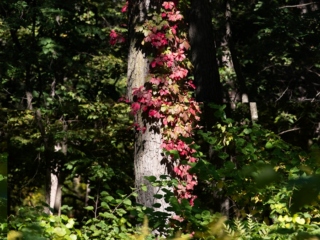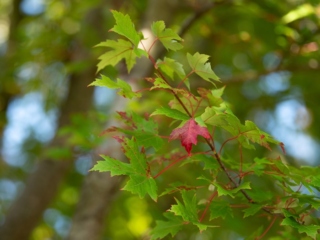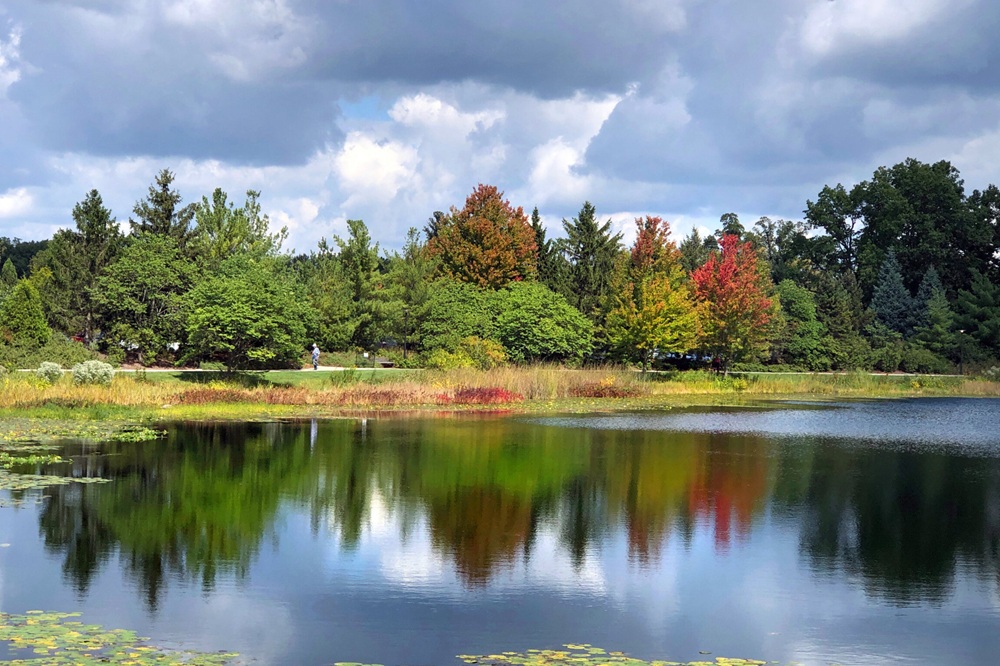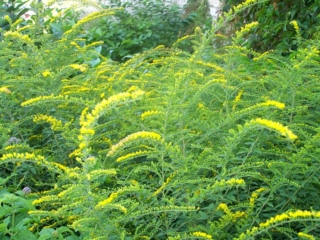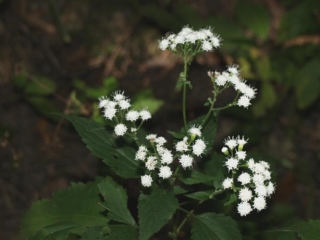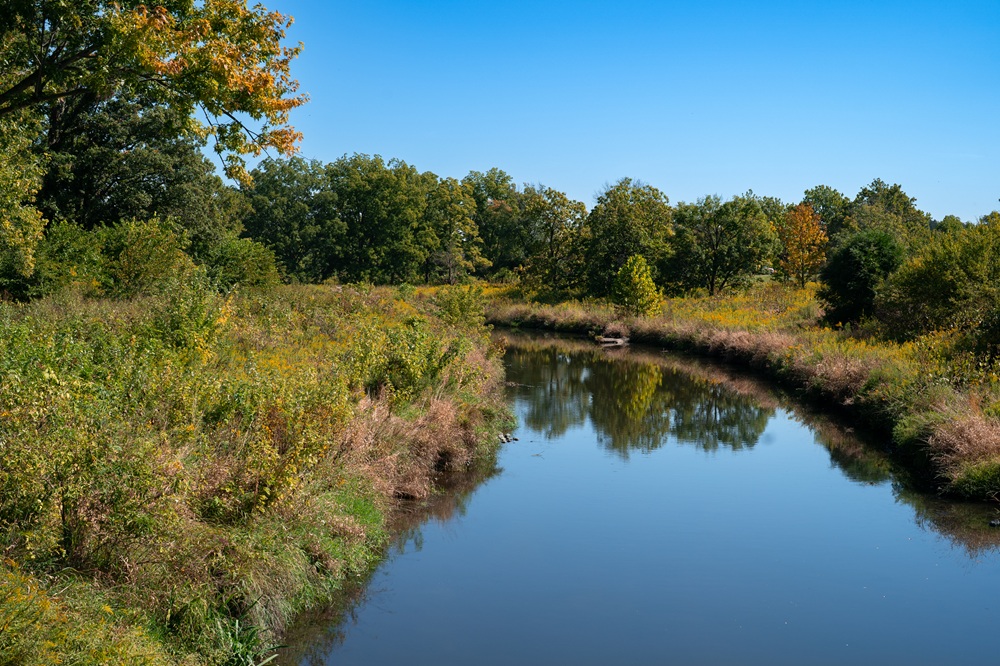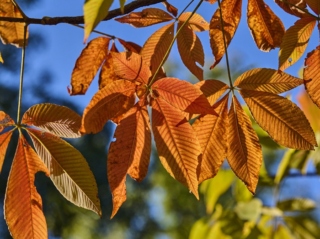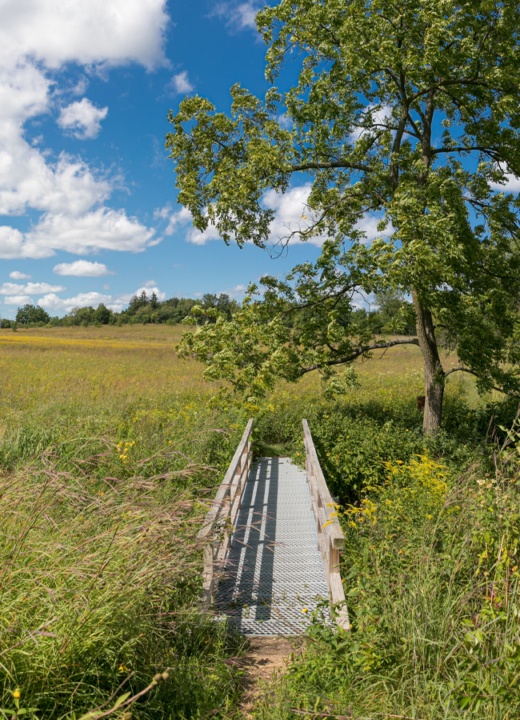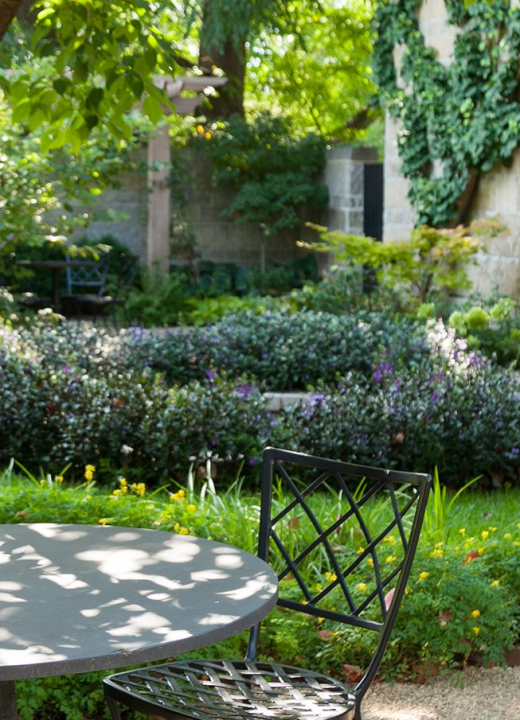Slider
Slider controls
Fall color as of Wednesday, October 29
This is a wonderful week to enjoy the colors of fall at The Morton Arboretum, where a wide variety of trees and shrubs display a tapestry of rich colors. Shades of yellow, gold, and light oranges predominate in the gardens, landscapes, tree collections and woodlands, with highlights of red and purple.
Yellow leaves can be seen in yellow buckeye, bitternut and shagbark hickory trees, tuliptree, honey-locust, pawpaw, ginkgo, and American elm. Among the trees showing shades of red or purple are sassafras, arrowwood viburnum, sumac, and some white oaks.
In the East Woods, many sugar maples have turned yellow, while here and there in the treetops are blazes of orange and red.
There is color everywhere at the Arboretum, but spots especially worth visiting include:
- Trees and other plants from Northern Illinois near parking lot P-2
- The view across the DuPage River Valley from atop Frost Hill at parking lot P-3
- The Maple Collection and Beech Collection at parking lot P-14
- The Oak Collection, especially two red Hill’s oak trees north of the Main Route road, near parking lot P-8
- The East Woods, where sugar maples are yellow with highlights of red and orange, easy to enjoy from the road and along trails between parking lots P-8 and P-15
- Red sumacs and yellow pawpaws near parking lot P-16
- Red sumacs and golden Miyabe’s maples and ginkgoes near parking lot P-18
- The Fragrance Garden and Joy Path near the Thornhill Education Center at parking lot P-21 on the West Side
- Witch-hazels in Witch-Hazel Dell near parking lot P-27
- Sumacs and prairie plants at the Schulenberg Prairie at parking lot P-25
- Yellow hickory and pecan trees in a grove of nut trees near parking lot P-31
How long will the color last? It depends on the weather in the coming days. Leaves are already beginning to fall, and windy days may sweep more away. With new color combinations developing every day, don’t wait to visit and enjoy the ever-changing kaleidoscope of trees at The Morton Arboretum.
Fall Color Highlights
Arrowwood viburnum
Arrowood viburnum is a Midwest native shrub, often used for screens and hedges, with leaves that turn a lustrous wine-red in the fall.
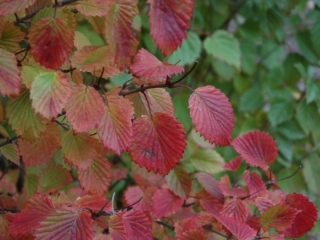
Honey-locust
Honey-locust is a fast-growing native tree commonly used for landscaping in the Chicago region. Its dark reddish-brown pods are a favorite food source for wildlife.

Sassafras
Sassafras is a North American native tree that provides vivid fall color and interesting mitten-shaped leaves. Female trees bear dark blue, berry-like fruit on bright red stalks.
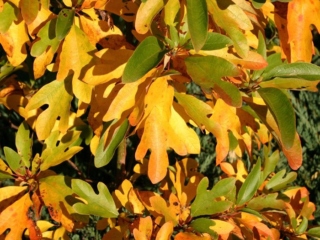
Sugar maple
Sugar maple is a Midwest native tree loved for its exceptional fall color, ranging from brilliant yellow to burnt orange.
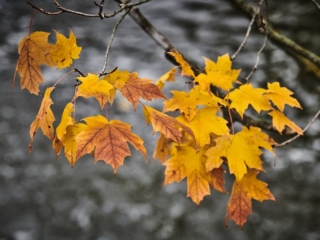
Sumacs
Sumacs bring outstanding color to the autumn woodlands, from yellow and orange to deep red and purple. Dense, fuzzy clusters of dark red fruits appear in early fall and often last through the winter.
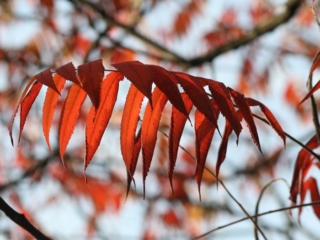
Witch-hazels
The yellow, strap-like flowers of common witch-hazel are among the last to bloom in fall, while other varieties display striking red and golden-yellow leaves.

About the Fall Color Report
The Fall Color Report is written by The Morton Arboretum’s manager of plant records, Ed Hedborn. It is typically published on Wednesdays throughout the fall to help guests plan their weekend visits. The Arboretum also publishes a weekly Bloom Report in springtime.
